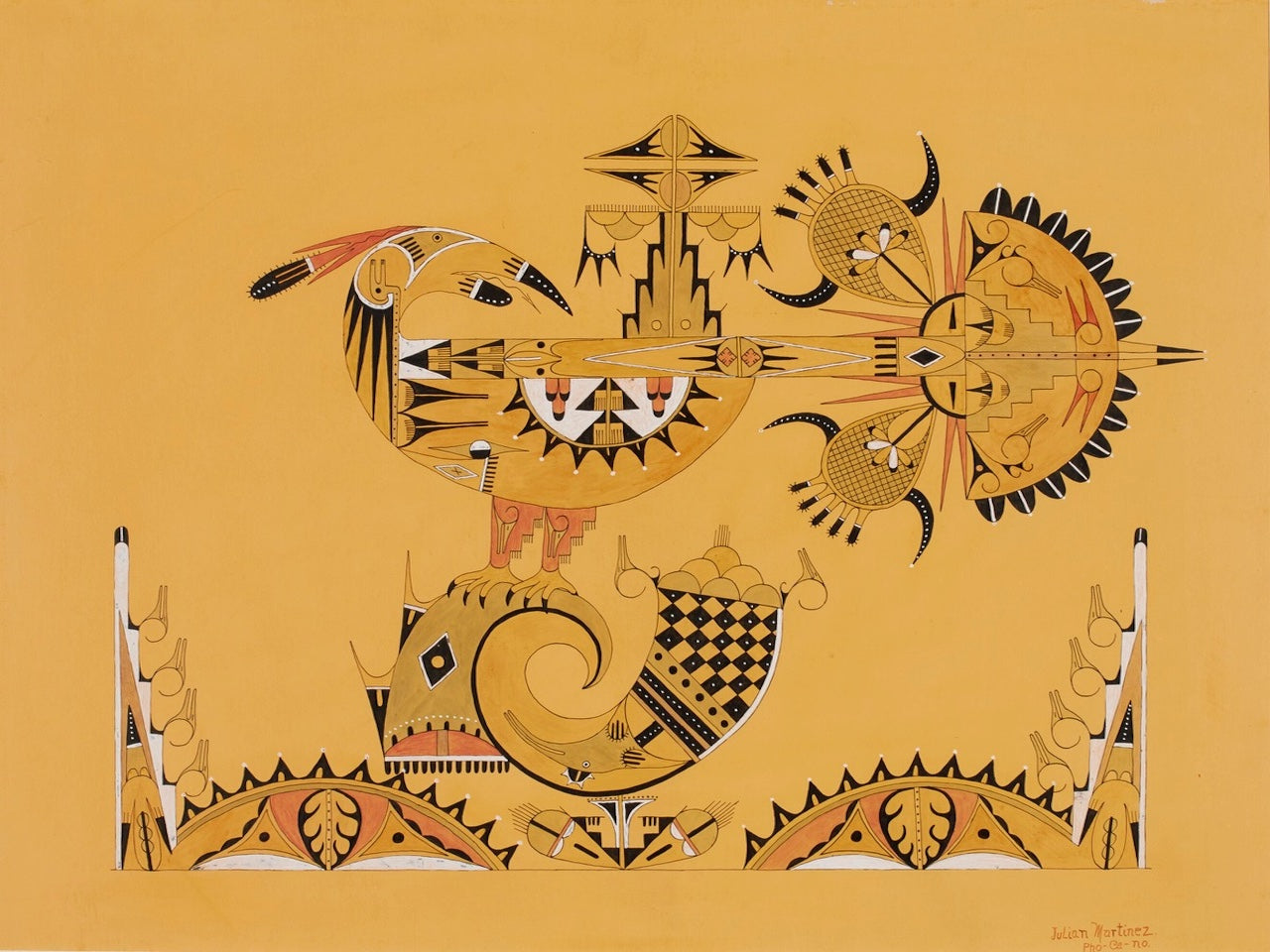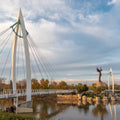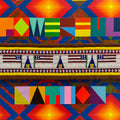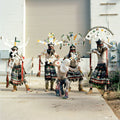With Gilcrease Museum closed, collection highlights go on tour
By Chadd Scott on
With the Gilcrease Museum in Tulsa midway through construction on a new building, its world-class collection of Native American art hits the road for the first time on a three-stop tour around the nation. Debuting earlier this month at the Ackland Art Museum at the University of North Carolina in Chapel Hill, N.C., “Past Forward: Native American Art from Gilcrease Museum” surveys more than 3,000 years of Native American art showcasing the extensive collection of Indigenous art amassed by Thomas Gilcrease (1890 –1962), oil tycoon, arts patron and a citizen of the Muscogee Nation.
The Gilcrease Museum is distinct for having been shaped by an Indigenous collector who maintained personal relationships with many of the Native artists whose works he acquired.
On view are 75 objects spanning paintings, sculpture, ledger drawings, beadwork, ceramics and textiles, primarily from the 19th century through the present. Displayed in tandem with the Gilcrease items are select historic and contemporary pieces from the Ackland’s collection of Native American art.

Julian Martinez, San Ildefonso Pueblo,1879-1943; Pottery Design, early 20th century. Watercolor and ink on paper, 20 12 x 25 916 in. Gilcrease Museum, Tulsa; Gift of the Thomas Gilcrease Foundation-1955.02.
“Past Forward” is divided into four sections: Ceremony, Abstraction, Identity and Sovereignty.
“Each of those (offers) a different lens to look at Native American art and culture,” Peter Nisbet, Ackland Art Museum deputy director for curatorial affairs, said. “One of them is aesthetic, the visual abstraction, and I like that invitation to look at these works in terms of pattern and color and decoration. One is by theme, ceremony, where there's (depictions) of Native American ceremonies.”
Straightforward.
“The other two are really challenging categories, identity and sovereignty, and the role of the visual arts in both maintaining identity and asserting sovereignty,” Nisbet added. “These are not overtly political works, but they're about the role of art and culture in those areas.”
Topics that should be of particular interest in North Carolina, although it may not seem that way. Most people would be surprised to learn that as of 2021, North Carolina had more than 300,000 residents who identify as Native American. That’s 6th highest in the nation following California, Texas, Oklahoma, Arizona and New York. The percentage of Native people in North Carolina is only three – outside of the national top 10 – but that’s tops east of the Mississippi River.
While numerous tribes call North Carolina home, only the Eastern Band of Cherokee Indians is federally recognized.

Nampeyo of Hano, Hopi, 1860-1942; Polychrome ceramic bowl with kachina design, ca. 1920. Clay and paint, 2 58 x 10 12 in. Gilcrease Museum, Tulsa-54.4408. Courtesy Gilcrease Museum and American Federation.
“Past Forward” makes no attempt to be a comprehensive representation of Native American art, and the presentation leans heavily on Plains and Southwestern material based on the Gilcrease’s collecting focus.
“Even though there are only a few pieces from the Eastern Band of Cherokee, it's a great opportunity for the Ackland to not only present great works of Native American art to our non-native audiences, but it's also a way for us to connect with the Native audiences in our in our area,” Nisbet said.
A rare opportunity as well. Museum exhibitions of Native American art are few and far between in the Carolinas, especially those sharing Plains and Southwestern material. By complete coincidence, the North Carolina Museum of Art in Raleigh, 20 miles from the Ackland, debuted a separate exhibition of Indigenous art, “To Take Shape and Meaning: Form and Design in Contemporary American Indian Art,” on March 2, 2024. That museum hadn’t presented an exhibition of Indigenous art since 1989.
Though heavy on art produced in the last 200 years, Nisbet’s two favorite items in the Ackland show date back thousands of years B.C.
“One bannerstone and one bird stone, archaic carvings, beautifully executed stone objects carved to perfection, which are from the Woodlands, the eastern part of (what is now) the United States,” he said. “They are stunning. I was keen to present them. They appeal by their geometry and abstraction.”

Porphyry bird stone from Archaic Woodlands, 8000–1000 BCE, 2 516 x 1 1116 x 4 716 in. Gilcrease Museum, Tulsa-61.1153. Courtesy Gilcrease Museum and American Federation of Arts.
Taken together, the artworks on view reinforce a critical objective for the Gilcrease Museum.
“The Gilcrease is making a very strong point about the continuity of Native American cultures, the continuing existence of Native American cultures,” Nisbet said. “It’s a very important part of the show to (display) both historical and contemporary … to stress the connections and continuities between, in this case, the 19th century material up through the present and showing contemporary art as well.”
“Past Forward” remains on view at the Ackland Art Museum through April 28, 2024, before heading to the Memorial Art Gallery of the University of Rochester in Rochester, N.Y. from June 1 through August 25, 2024, and wrapping up at The Society of the Four Arts, Palm Beach, FL November 23, 2024, through January 19, 2025.
The Gilcrease Museum has been closed since July 5, 2021, with an anticipated reopening date in 2026.



